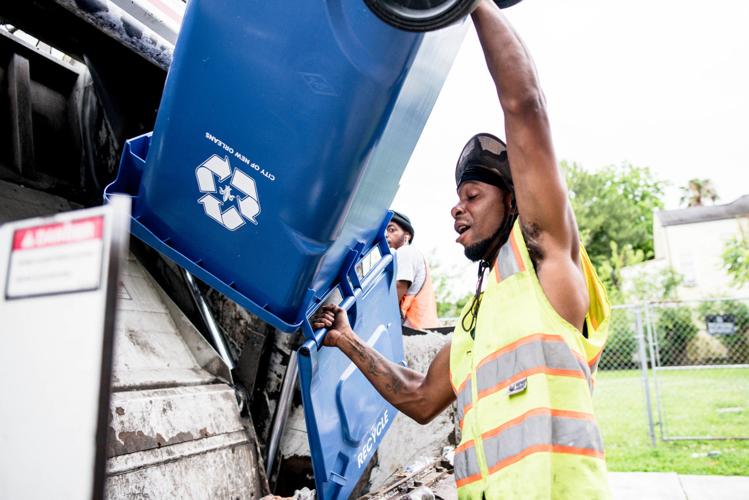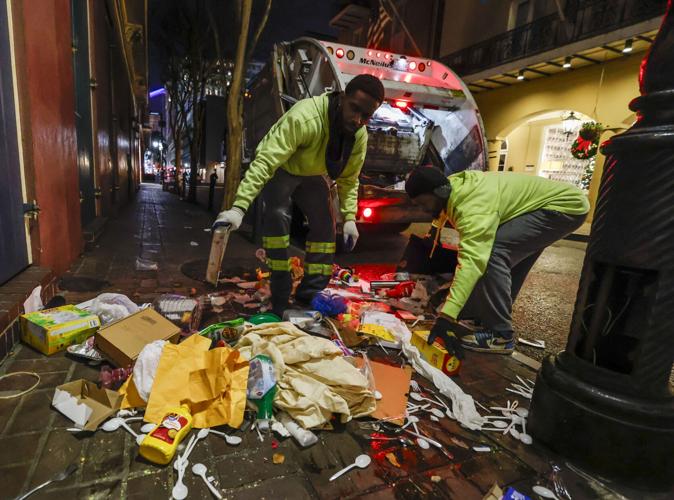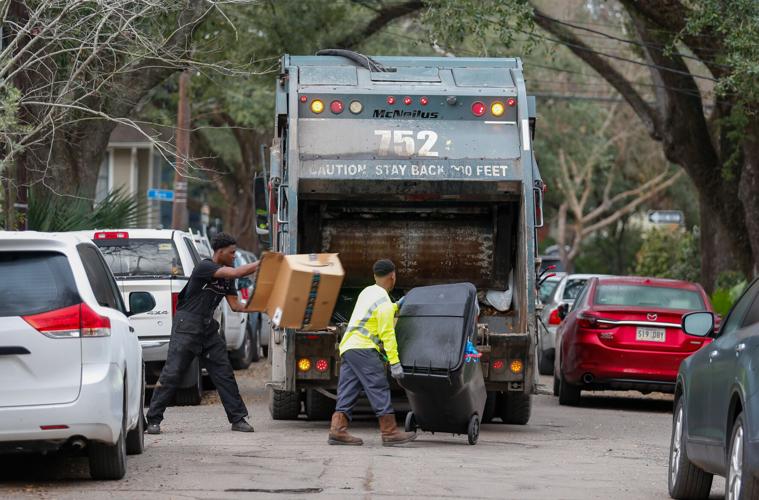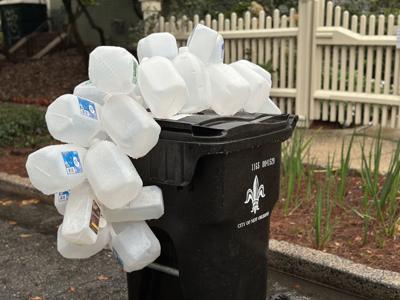New Orleans leaders hope a pair of grants totaling more than $5.4 million will help boost a recycling rate that has long lagged far behind other cities.
The U.S. Environmental Protection Agency is awarding the city nearly $4 million to expand curbside recycling, replace thousands of busted recycle bins and fund the city’s first-ever solid waste master plan. The Recycling Partnership, a Washington, D.C.-based nonprofit group, is supplementing the EPA grant with an additional $1.4 million to help educate residents about recycling and develop programs that increase participation.
“We want to talk aspirationally about how we get our very low (recycling) rate up,” said Matt Torri, the city’s sanitation director.

Employees with RDI of Jackson, Ms. pick up garbage on Willow Street in New Orleans, Sunday, Jan. 8, 2023. (Staff Photo by David Grunfeld, NOLA.com | The Times-Picayune | The New Orleans Advocate)
Of all the household waste New Orleans generates, only 2% is recycled. That’s less than a tenth of the national average. According to the EPA, just over 30% of municipal solid waste in the U.S. is either recycled or composted.
This “diversion rate” is slightly better in Houston, which recycles or composts 32% of its waste. Gainesville's diversion rate is nearly 40%, and Seattle and Philadelphia recycle or compost about half their waste. The country’s top recyclers include San Diego and San Jose, which boast diversion rates of more than 70%.
Mayor LaToya Cantrell said the EPA grant will help New Orleans reach its goal of diverting at least a quarter of its waste by 2030.
“This $3.9 million federal grant will undoubtedly help achieve our goal of increasing recycling rates, expanding our recycling infrastructure and educating the public on the importance of being more environmentally friendly,” she said.
New Orleans has struggled to improve its recycling programs since Hurricane Katrina struck Louisiana in 2005 and damaged the region’s waste sorting facilities. After almost 20 years, the city still does not offer curbside glass recycling, and only about half of New Orleans’ households have requested recycle bins as part of the city's "opt in" recycling program.

Ramelli Waste workers scramble to pick up trash on Dauphine street in the French Quarter in New Orleans, Friday, Dec. 15, 2023. (Photo by Sophia Germer, The Times-Picayune)
The EPA grant aims to rope in 73,000 households that don’t participate and replace 10,000 old recycle bins used by current participants.
“This means every household throughout the city that is eligible for curbside pickup will now be a part of our circular economy,” Cantrell said.
The solid waste master plan would evaluate a host of proposed improvements, including a possible food and yard waste collection and composting program.
“We know that 40% of of the material we’re sending to the landfill is food waste,” Torri said “It’s just a huge amount, and it’s the majority of our weight because it’s so heavy.”
As part of the master plan process, New Orleans would study “best in class” cities, “some of which have 30-year-old, really established programs,” Torri said.

New Orleans workers empty recycling bins in Treme on May 10, 2019.
He highlighted Austin, which has a composting program that diverted more than 90,000 tons of food and yard waste from landfills over the past five years.
Another goal of the master plan would be to recommend ways of expand recycling beyond single-family homes. The city’s recycling program doesn’t support most commercial properties or residential buildings with more than five units.
“With commercial properties, that’s a lot of food, cardboard and other waste that’s not being diverted,” Torri said.
Increasing education about recycling is especially important in New Orleans. Households that participate in curbside recycling too often toss in items that can’t be recycled. These include plastic grocery and trash bags, styrofoam, low-grade plastic items that can’t be recycled, and containers that still have food or liquids in them.
The city estimates that about a quarter of the items residents send to the recycle center have to be pulled out and sent to the landfill.










